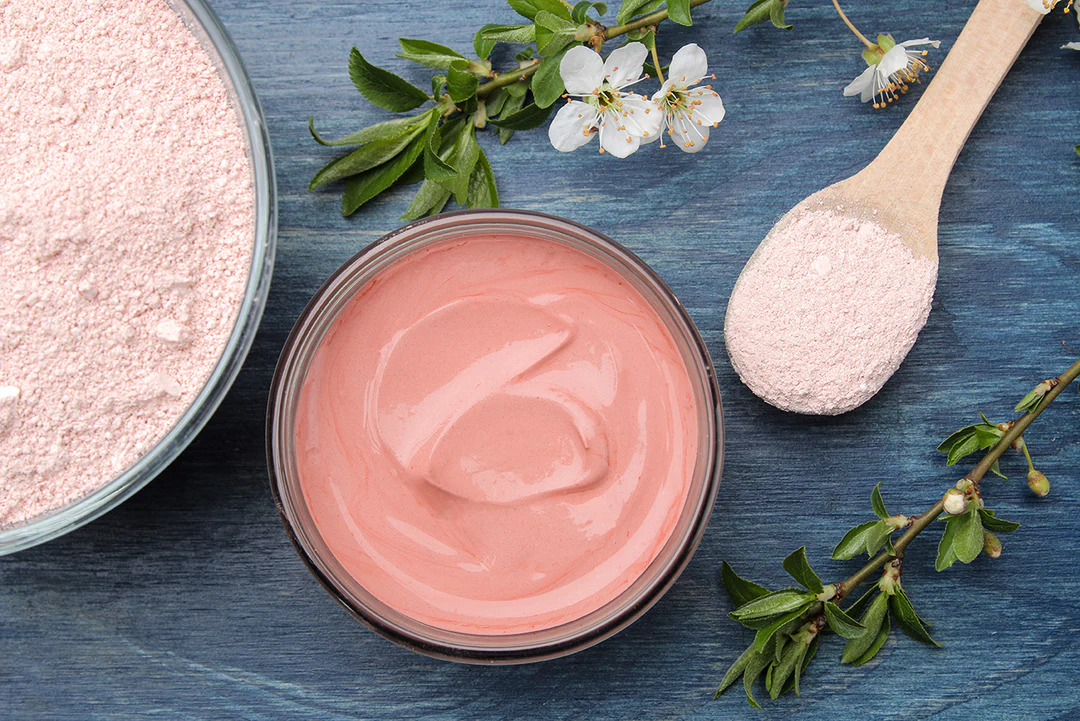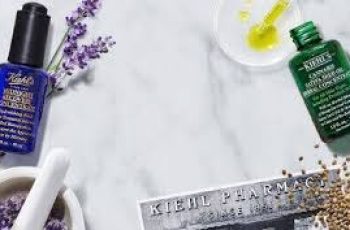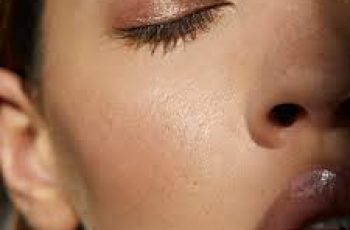Is Salicylic Acid Good for Keratosis Pilaris?
Have you noticed that the skin on your arms, cheeks, or thighs often has a bumpy texture? Have you ever wondered what it is and why you suffer from it? It could be keratosis pilaris, also known as chicken skin, which is a common problem many of us have. With that in mind, we made it our mission to learn more about this genetic condition and whether salicylic acid is good for keratosis pilaris.
Before we dive in: If you want to learn more about salicylic acid, read our blog post. For those who just need a quick reminder, here are some examples of what salicylic acid can do for your skin.
What is salicylic acid? How does it affect your skin?
Salicylic acid is a popular acne-fighting ingredient that belongs to the beta-hydroxy acid (BHA) family. It can offer a lot of benefits, especially for those who suffer from frequent breakouts.
Salicylic acid is oil-soluble, which means it penetrates deeper into the skin than other acids, such as the popular AHA, glycolic acid. It removes impurities like excess sebum, dirt, bacteria, and more from your pores.
Salicylic acid removes dead skin cells that build up on the skin’s surface, causing spots and blackheads and making the complexion appear dull.
Salicylic acid removes the barrier of impurities that build up on the skin’s surface, allowing other skincare formulas to absorb quickly.
What is keratosis pilaris?
Keratosis pilaris is a common skin condition that occurs on the skin when a buildup of keratin, a harmless but unsightly hard protein, occurs. This causes clogged pores and creates rough skin with small bumps under the skin. The texture and appearance of the skin is similar to what many sufferers refer to as chicken skin, and the skin often breaks out flaring up throughout the year, especially during the winter months.
There is no real cure or understanding of how and why people develop keratosis pilaris, but there are skincare ingredients that can help reduce the severity of keratosis pilaris.
Which acid is best for keratosis pilaris?
There are a variety of acids that can help fight keratosis pilaris. Members of the AHA and BHA families are most commonly used because they provide chemical exfoliation. These acids are found in products such as toners, cleansers, and serums, all of which are found in over-the-counter formulas. If you’re looking for something more impactful, consult with a trained professional to find an effective treatment or medical product to incorporate into your daily routine.
The best acids for keratosis pilaris are:
Lactic Acid
It’s considered the gentlest of the AHAs because its molecular size is too large to penetrate too far and cause irritation. It also contains hydrating properties that allow the acid to exfoliate while locking moisture into the skin barrier. This not only restores your complexion’s radiance, but also strengthens the skin and ensures it can protect itself from free radicals, such as UV rays, pollution, and other environmental influences.
Salicylic Acid
Many people with oily skin and acne use salicylic acid, which is more effective than lactic acid. This is because it’s oil-soluble, which means it can penetrate deeper than lactic acid and clear out pore-clogging bacteria, dirt, and debris. If you have sensitive skin, I would avoid salicylic acid because it’s too strong and can cause irritation.
Glycolic Acid
Glycolic acid is derived from sugar cane and is one of the most popular AHAs. It’s somewhere in between lactic acid and salicylic acid in terms of what it does to the skin. Its molecular size is smaller than lactic acid, but not as small as salicylic acid. Therefore, it is an effective ingredient for normal skin. You will also find that glycolic acid can be used twice a day, especially when it is included in the skin care products that rinse the skin.
Is glycolic acid better or salicylic acid for keratosis pilaris?
Both acids are effective in clearing keratosis pilaris from the skin. Your choice ultimately depends on how your skin reacts to the acid. As I mentioned before, salicylic acid is more effective than glycolic acid and can cause irritation. This is the main problem with using these active ingredients on the face instead of the body. The skin on our bodies is a little tougher. The best way to determine which acid you should use is to do a 24-hour patch test before applying it all over your skin. To do this, apply a 10-penny-sized amount of the product to the inside of your forearm and leave the product there for 24 hours. If there are no signs of irritation, you are good to go. If you have any questions, always consult a doctor or dermatologist.
What can get rid of keratosis pilaris?
There are several ways to treat keratosis pilaris at home. Here are some examples of proven methods that are simple and effective for treating KP.
Start by gently exfoliating your skin in the shower. By this I mean using a loofah or washcloth to loosen the bonds of dead skin cells so that they can fall off more easily with the following steps in this routine.
After gently exfoliating, apply a chemical exfoliant that can be applied directly to the skin after bathing. The best peels are glycolic, salicylic, and lactic. You will also find body lotions that contain urea that also remove dead skin cell buildup.
Finish by applying a moisturizer that contains hyaluronic acid or other moisturizing ingredients to nourish the skin. You should choose an oil-free formula to prevent the hair follicles from becoming clogged again.
This is an example of the simplest way to care for your skin. Unfortunately, there is no known treatment for keratosis pilaris that will completely eliminate the condition. But this routine will help you deal with any flare-ups.
What should I avoid if I have keratosis pilaris?
There is a lot of information on ways to reduce the buildup of keratin in the skin through dietary changes. People who have removed gluten from their daily diets have found that they suffer significantly less from flare-ups of KP. Others also find that cutting out spices, oils, and lactose can help relieve their symptoms.There’s no scientific basis for this, though, so if you want to know more, I recommend you talk to your doctor.
How long does it take for keratosis pilaris to completely go away?
The average time for keratosis pilaris to completely go away is 4 to 6 weeks. This happens after consistent use of the best product formulas, and even finding the right skincare products often takes some time.
If you want to eliminate keratosis pilaris from your skin, you’ll need to maintain a daily routine to ensure that breakouts are kept to a minimum.
Here’s more information on whether salicylic acid helps treat keratosis pilaris. With any luck, I hope I’ve cleared up some of the confusion surrounding this skin issue, but if you have any other questions, follow us on Instagram!
DQH Knowledge drop: In your 20s, your skin cell turnover decreases. (Cell turnover is a key component in keeping your skin youthful.) You know what else slows down? Your collagen production. Starting in your 20s, collagen decreases by about 1 percent per year. Should you want to prevent fine lines and wrinkles, start by eliminating behaviors that contribute to premature aging. “If it’s bad for you, it’s bad for your skin,” says dermatologist Michel Somenek.
“Cigarette smoking reduces blood flow to the skin and causes premature wrinkling and a dull skin texture. Making the repeated pursed motion to inhale can also cause smoker’s lines. Alcohol and recreational drugs are toxins for the skin that damage its cellular structure and DNA,” Somenek tells us. “The faster you eliminate vices while you are young, the better chance your skin and body have to recuperate.” Also, adopting an anti-aging routine in your 20s is key. After all, the best offense is a good defense. We spoke to Somenek and experts Joshua Ross and Audrey Kunin to find out more.
Keep reading for the best anti-aging products for your 20s, according to skincare professionals.
Sunscreen
“We all know that the sun is the number one cause of skin aging and starting the prevention in your 20s is very important,” Ross says. “The majority of your sun damage won’t start to appear until you’re in your 30s, so don’t wait until you see it surface or you’ll be behind the curve. Stay ahead of it with a good-quality zinc-based sunscreen worn daily.”
Farmacy Green Defense Daily Mineral Sunscreen
An invisible sunscreen with SPF 30, plus botanical extracts meant to protect skin with tons of antioxidants. Bonus: It’s clean and fine to use under makeup.
Bareminerals Complexion Rescue™ Tinted Moisturizer Broad Spectrum SPF 30
Although we recommend you use your SPF and moisturizer separately, we also understand moments when you don’t have time or energy for that extra step. For those times, this bareMinerals moisturizer is a great thing to have on hand.
Vitamin C Serum
“A great introduction to anti-aging is to start with a vitamin C serum in your morning skincare routine,” Ross says. “It’s a powerful antioxidant that will neutralize free radicals and brighten the skin.” He adds that it’s a great way to counteract the effects of the sun’s harmful rays, which, as previously mentioned, are among the biggest causes of premature aging.
Drunk Elephant C-Firma™ Vitamin C Day Serum
The Drunk Elephant C-Firma is a lightweight serum that promises to give skin a glow by combining the brightening powers of vitamin C with ferulic acid, l-ascorbic acid, and vitamin E. The included sodium hyaluronate is meant to replace hydration loss, so you shouldn’t have to deal with any irritation.
Sunday Riley C.E.O. Rapid Flash Brightening Serum
This potent serum is jam-packed with vitamin C (15 percent, to be exact), which means it’s a potential superstar at both brightening skin and dousing it in antioxidants.
Peptides
Using peptides on your skin has many benefits, says Somenek. “The skin barrier is what defends the body against pollution, UV rays, bacteria, and toxins. It can be damaged by several everyday factors. Using topical peptides aids in building a stronger barrier,” he says. “Peptides comprise elastic fibers, which are a type of protein. These fibers help to make skin appear taut and firm. Peptides can also help repair damaged skin, relieve inflammation, and even out skin tone. Some peptides can kill acne-causing bacteria that is common in 20-somethings.”
Kunin agrees, saying, “Peptides are an excellent entry point for supporting collagen.” She recommends looking for face and eye treatments that contain these collagen-boosting powerhouses.
Charlotte Tilbury Magic Eye Rescue Cream
This Charlotte Tilbury super-emollient eye cream has a base of coconut oil and shea butter (read: it’s incredibly hydrating). Botanicals plus peptides are meant to help reduce dark circles and boost collagen, respectively.
This creamy moisturizer serves up potent collagen-boosting peptides and pycnogenol, and antioxidant-rich vitamin C. “Instead of sitting on top of the skin, peptides penetrate the outer layer so they go deep. The ‘signals’ they send tell the cells to produce elastin and collagen, which are needed for youthful-looking skin,” explains Somenek.
At-Home Peel Pads
Remember that skin cell turnover fiasco we talked about earlier? One way to help support it is by exfoliating. “Exfoliation is important to help keep skin fresh and luminous,” Kunin says. She recommends using at-home peel pads as an easy and effective way to exfoliate.
“The goal in your 20s is to fight the slowing pace of cell turnover. It is wise to use products that gently exfoliate, yet still remove oil and other impurities. Products that have Alpha Hydroxy Acids (AHA) or Beta Hydroxy Acids (BHA) are a good choice.”
According to Somenek, you should only exfoliate two to three times a week. “People of all ages are guilty of over-exfoliating and that can be too much of a good thing,” he says.
Dermadoctor Kakadu C Intensive Vitamin C Peel Pad
A few swipes of this Derma Doctor powerful peel pad promise to leave your skin glowing and smooth, thanks to the seven (yes, seven) types of chemical exfoliants, including AHA and BHA. It also contains vitamin C via Kakadu plum extract for added brightening and antioxidant protection.
KEY INGREDIENTS Kakadu plum extract is sourced from the Kakadu plum, a fruit grown in northern Australia. It contains vitamin C, which restores the skin’s natural barrier, increases collagen production, and soothes irritation.
Dr. Dennis Gross Skincare Alpha Beta® Universal Daily Peel Pads
These are the gold standard of peel pads, with a cult following and over 900 five-star reviews on Sephora. They’re easy to use and contain a blend of anti-aging exfoliating acids.
Emollient Night Cream
“In your 20s, you need to start upping the hydration in your skincare routine. You may have been cautious of over-moisturizing because of acne in your teens, but as you enter your 20s, your skin transitions and becomes drier,” Ross says. “I recommend an emollient night cream added into your evening skincare regimen.”
“Twenty-somethings need to make sure that they are not using creams that will clog their pores and cause excess oil production,” says Somenek. Opt for non-comedogenic products.
Cerave Skin Renewing Night Cream
One great choice is the CeraVe Skin Renewing Night Cream, which is a non-comedogenic night cream that leaves skin soft and glowy. It combines the moisturizing powers of ceramides and hyaluronic acid.
RoC Retinol Correxion Max Hydration Creme
“The best night cream ingredients contain retinol, benzoyl peroxide, and/or salicylic acid or hyaluronic acid. The goal is to moisturize, yet remove excess oil,” says Somenek. This Roc Retinol Correxion cream fits the bill as it contains both hyaluronic acid and retinol so it promises to moisturize while also being non-comedogenic.



